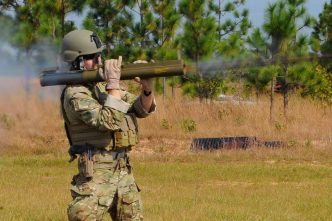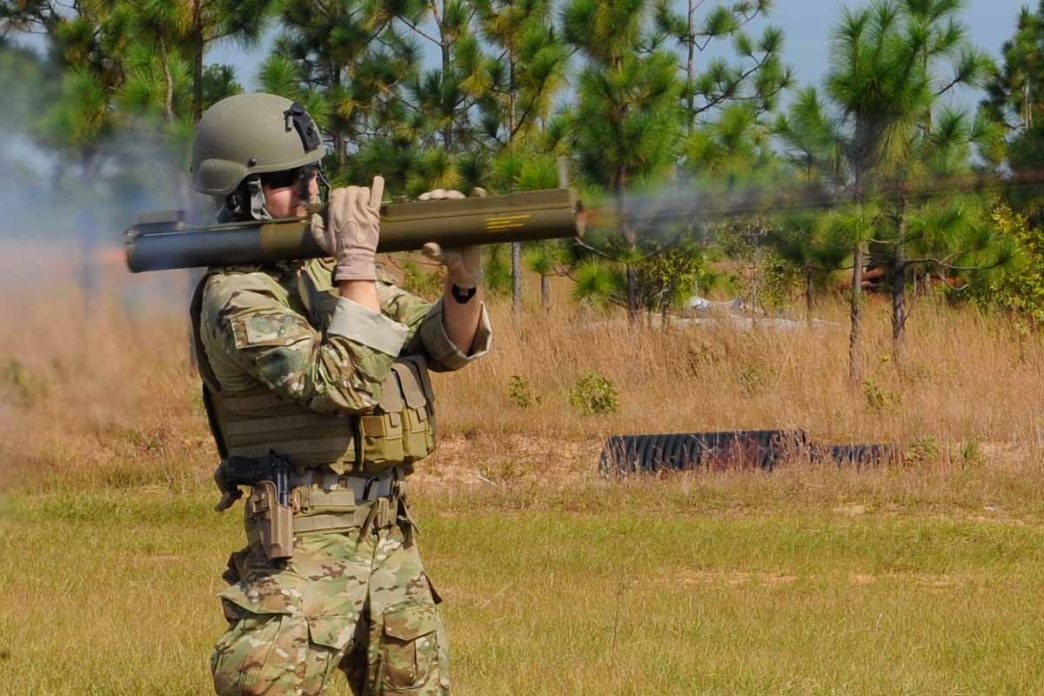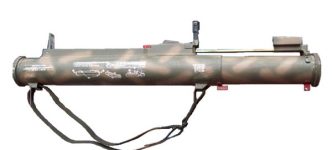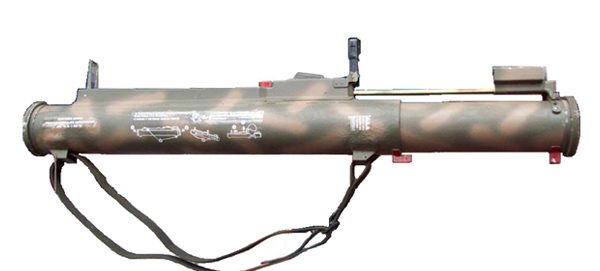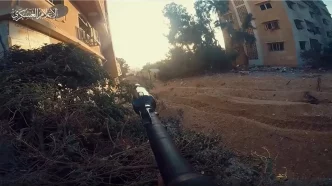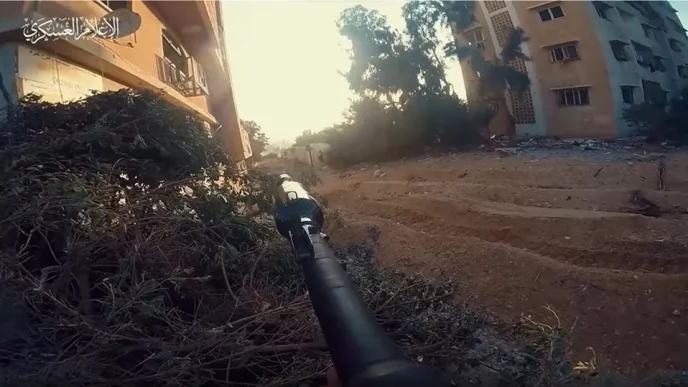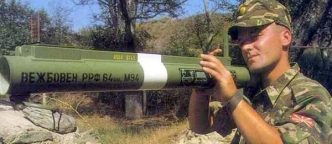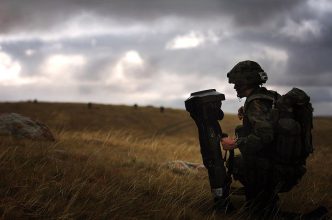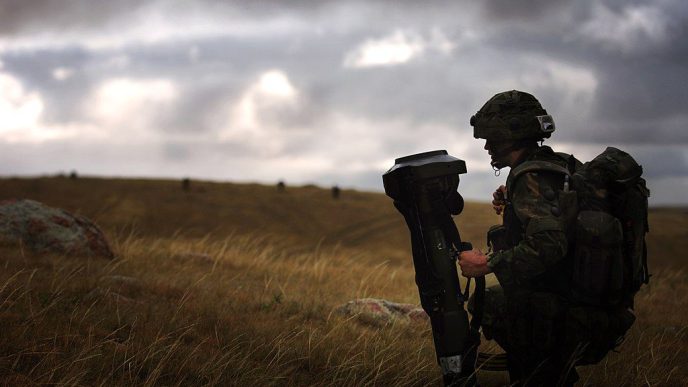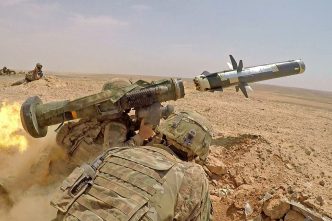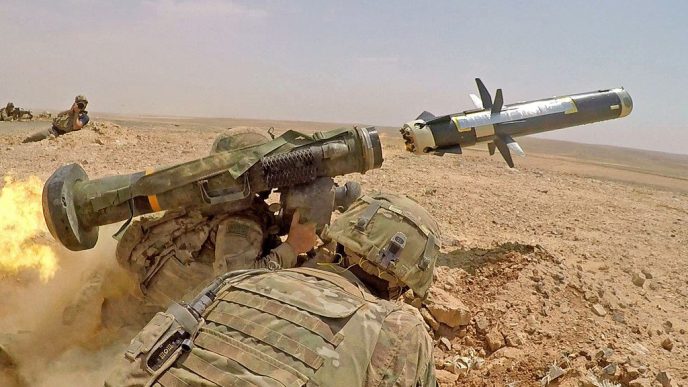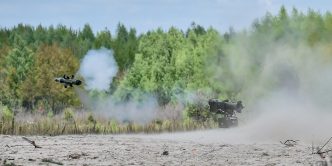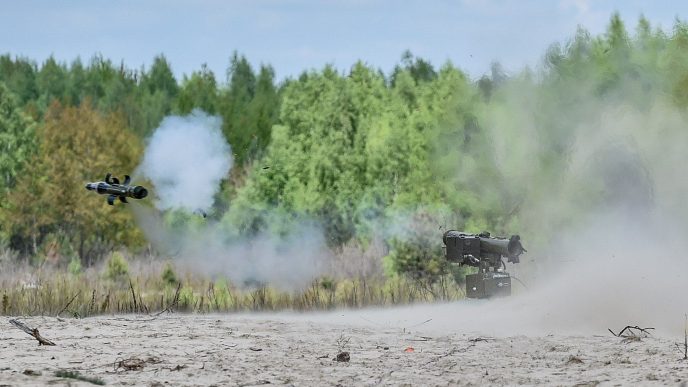The Talley Defense Systems M72 LAW (Light Anti-armor Weapon System) is a disposable, single-shot anti-tank rocket weapon developed by the US Army in the late 1950s. This weapon is lightweight, easy to use, and intended to be issued to as many soldiers as necessary.
History
In 1956, the US Army established a requirement for a lightweight anti-tank weapon that could be carried and fired by a single soldier. The idea was to create a small, single-use launcher that could be discarded once fired instead of issuing a reloadable anti-tank weapon to a dedicated grenadier. After exploring various possibilities, it was decided that the weapon should be a small, single-use launcher that would be discarded once fired.
Between 1956 and 1958, a design was submitted to the Army by the Hesse-Eastern Division of Flightex Fabrics. This design entailed a 66 mm rocket with a shaped charge warhead, launched from a small, disposable fiberglass tube made just strong enough for decades of rough handling and one shot. In February of 1958, the weapon was developed at the newly-established Rohm and Haas research laboratory at Redstone Arsenal. The propulsion system was designed first, after which the remainder of the weapon was designed by a team under Paul V. Choate, Charles B. Weeks, and Frank A. Spinale.
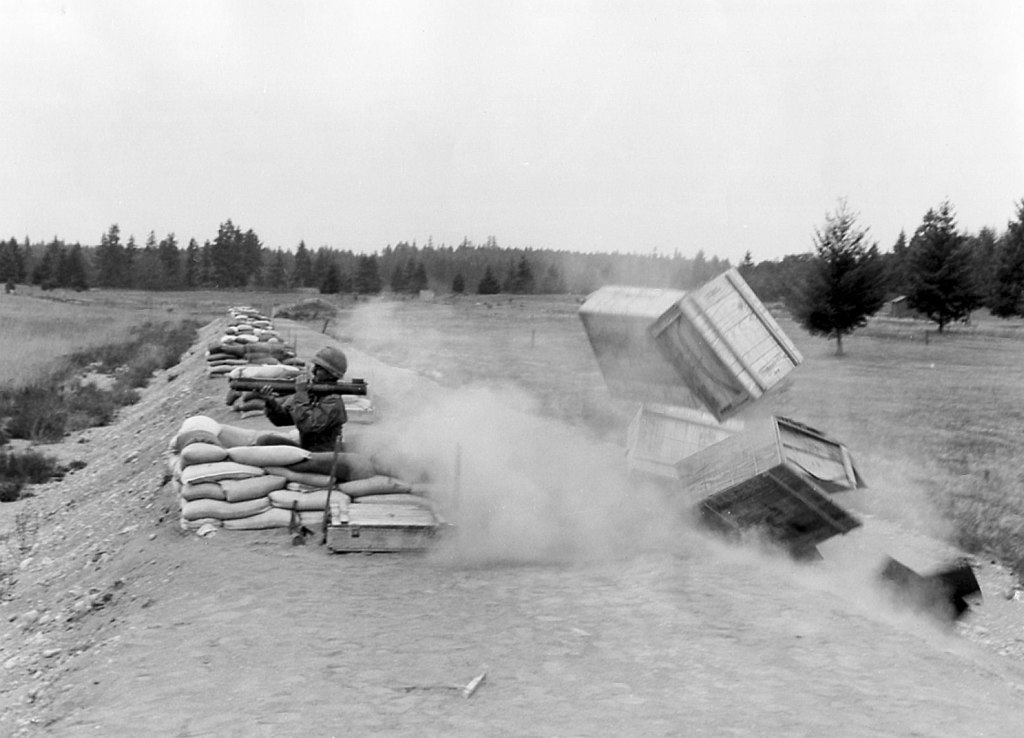
Once development was underway, work proceeded quickly, with the first shoulder-fired launch occurring in October of the same year. The complete weapon matured quickly and was type-classified by the Army in March 1961 as “66 mm HEAT, Rocket, M72”. Full-scale production was initiated by Hesse-Eastern in 1963, and the weapon achieved operational service with the US Army and US Marine Corps in the same year.
Design
The M72 LAW is a lightweight, single-shot anti-tank weapon easily identifiable by its cylindrical fiberglass launcher. This launcher is typically olive drab in color and features a long, narrow, rectangular sight housing that runs along the entire tube length. A carrying sling is attached to a swivel on the rear cover, while another swivel is found on the underside of the foreword section of the launch tube.
The M72 LAW extends to around 30% of its closed length when opened. The inner tube is extended from the back end of the outer tube, and a rail that is retracted entirely into the sight housing is now visible. The front cover is removed from the weapon, while the rear cover dangles on a hinge below the back end of the outer tube. The carrying sling is detached from the swivel on the rear cover and is usually left attached to the front swivel.
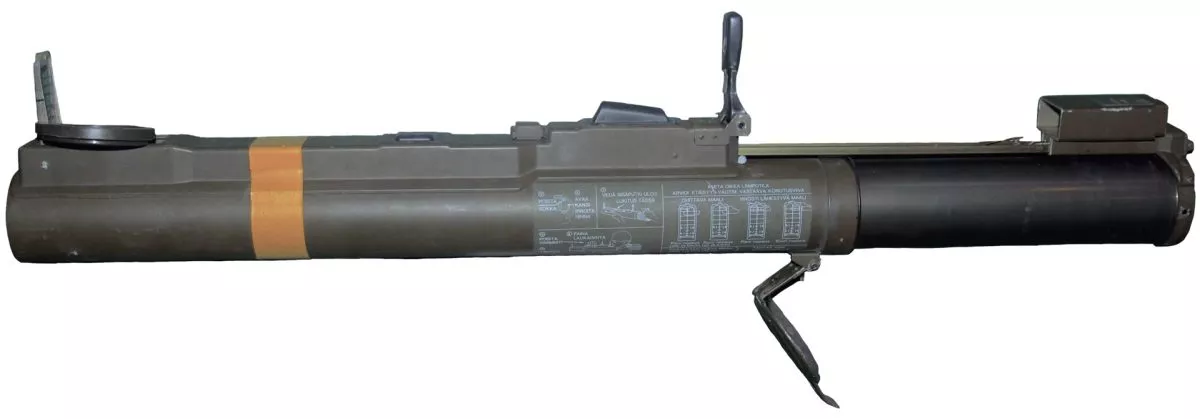
The M72 LAW features a 66 mm rocket with a shaped charge warhead launched from a small, disposable fiberglass tube. A 2-stage propulsion system is used to launch the rocket, starting with a simple black powder charge ignited when a firing pin is struck upon squeezing the trigger bar. This charge hurls the rocket clear of the operator, simultaneously initiating its ignition. When the solid-fuel sustainer rocket is fully burned, it is clear of the firing position. The M72 LAW family has evolved, with increasingly more powerful motors being fitted to them, increasing their range and muzzle velocity.
The front and rear sights on the M72 LAW are of the flip-up ladder type, with reticules printed on two small panes of plexiglass. The maximum sighting range is 350 m, in increments of 25 m up to 200 m, and in increments of 50 m beyond that range. Stadia lines and range markers are included for calculating lead on crossing targets.
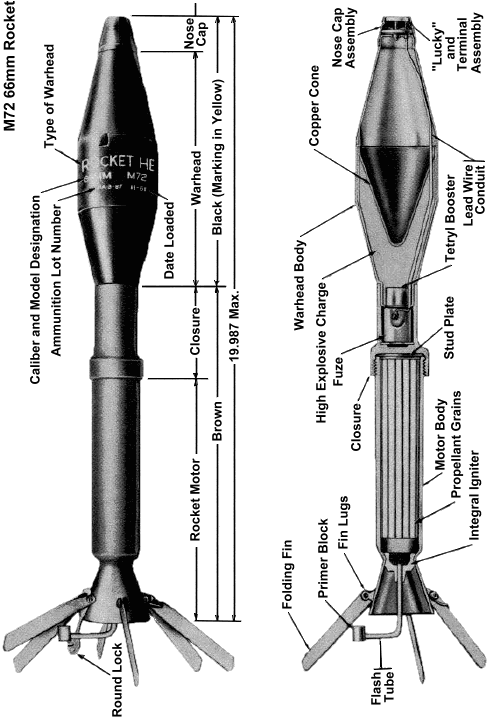
The M72 LAW can be fired from a standing, kneeling, or prone position. Still, when firing from a prone position, the venturi must be pointed away from the operator to avoid serious injury from the backblast. The backblast area of the M72 LAW is a 30-degree cone, and the “danger zone” extends to 15 m behind the weapon with an 8 m base. All personnel, equipment, and flammable material must be clear of this area. A widely-circulated US Army photograph taken in 1969 at Fort Lewis graphically demonstrates the force of the LAW’s backblast in the “danger zone,” as a heap of wooden packing crates directly behind Pvt. Barry Hill (the weapon’s operator in the photograph) was sent flying through the air behind him. The “caution zone” extends from the aforementioned 8 m base 15 m behind the weapon to a 25 m base 40 m behind the weapon. Precautions must be taken to protect the eyes and ears of any person inside the “caution zone,” Any debris behind the weapon may also be flung with significant force into this area.
Most variants of the M72 LAW have a shaped charge warhead capable of penetrating 300 mm of Rolled Homogeneous Armor (RHA). However, several recent models use HE-FRAG warheads, HEDP, APERS, and non-explosive training warheads. However, none of the LAW variants with HEAT warheads have a precursor charge, making them incapable of defeating Explosive Reactive Armor (ERA).
Operational history
The early service of the M72 LAW was an unfortunate period in the history of the US military. During the Vietnam War, the LAW was initially considered effective against enemy-held structures and fighting positions but ineffective in the defense against tanks. The Battle of Lang Vei was the most significant example of the LAW’s problems. When facing an approaching North Vietnamese Army armored formation, the garrison had only a few weapons. The delivery of 100 M72 LAWs did not save the garrison. Most of the launchers failed, with some rockets misfiring, launching but not exploding, exploding moments after launch, or failing to penetrate the armor of the enemy vehicles.
Some of the launchers were impossible to arm, and the Green Berets had to concentrate their rocket fire against the tracks of the advancing tanks, which was also ineffective. After this, the Army conducted a test-firing of a batch of M72s to test their reliability, with poor results. Consequently, major design revisions resulted in improved rocket motors and launchers. However, the LAW became obsolete with the introduction of Soviet tanks with thicker frontal armor and composite armor. This resulted in a lack of confidence in the M72 LAW. The US Army developed a successor, the FGR-17 Viper anti-tank rocket launcher, which was a greater embarrassment, leading to the acquisition of a foreign weapon, the Bofors AT-4.
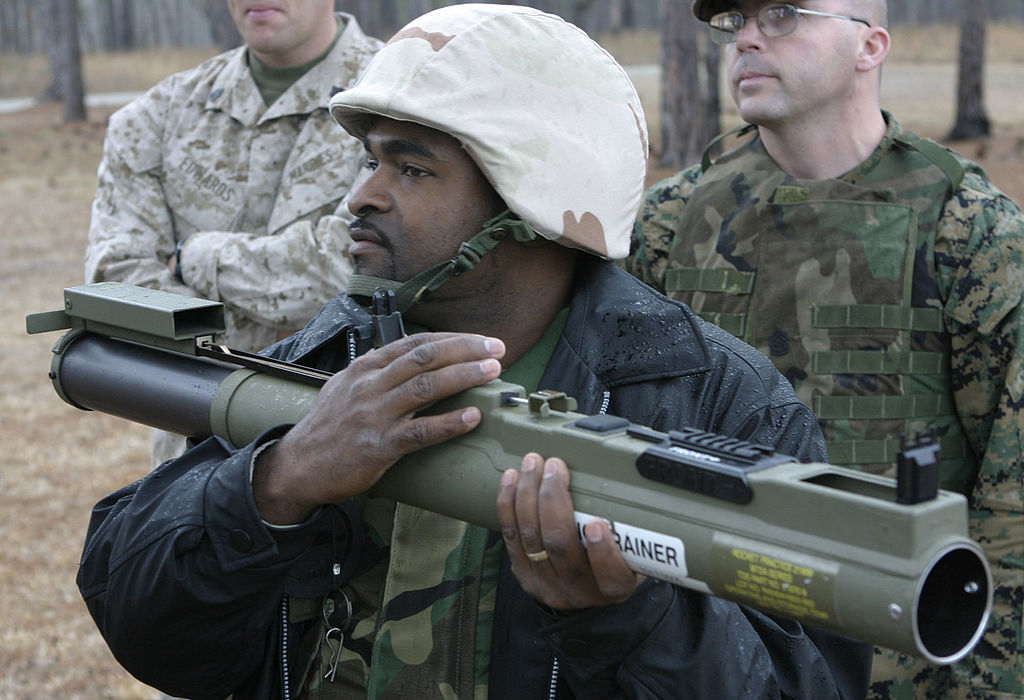
Despite its reputation, the M72 LAW family remains in production and service because of its utility. It has been used in almost every US ground conflict since the Vietnam War and has been used by the US military and its allies in Afghanistan and Iraq. The known operators of the M72 LAW include Australia, Austria, Belgium, Canada, Chile, Egypt, El Salvador, Finland, Greece, Indonesia, Israel, Lebanon, Luxembourg, Malaysia, Mexico, Morocco, the Netherlands, New Zealand, Norway, the Philippines, Portugal, Romania, South Korea, Spain, Taiwan, Thailand, Turkey, the US, the UK, Vietnam, and Yemen. It has been retired from service with Cambodia and Denmark.
The M72 LAW, a portable one-shot anti-tank weapon, continues to be in production and is currently manufactured by NAMMO Talley in the US, NAMMO in Norway, and MKEK in Turkey. Depending on the model, the unit cost of a new M72 LAW ranges from $750 to over $2,200. The M72 LAW’s widespread deployment and abundance suggest its service life is bound to extend well into the foreseeable future.
Variants
The M72 LAW, a portable one-shot anti-tank weapon, has undergone various iterations and modifications. The M72 was the original production model featuring the M54 rocket. The M72A1 and M72A2 models have improved rocket motors, though it’s unclear how the latter differs from the former. The M72A3 is either an M72A1 or M72A2 with improved safety features.
The M72A4 has an improved launcher assembly and a higher-velocity rocket with an improved warhead. The M72A5 is essentially an M72A3 with an improved launcher. The M72A6 is armed with a High-Explosive Dual-Purpose (HEDP) warhead designed for use against structures, personnel, and light armor. However, it’s not expected to be effective against main battle tanks. The M72A7 is a modified version of the M72A6, designed specifically for use by the US Navy.
The M72E8 is an M72A7 with a Fire-From-Enclosure (FFE) capability, developed by NAMMO Raufoss in Norway. The M72E9 is a NAMMO Raufoss-developed version of the M72A5, with a significantly more powerful shaped charge warhead. The M72E10 is essentially an M72E8 with a High-Explosive Fragmentation (HE-FRAG) warhead designed for use against personnel.
The M72AS is a training RPG with a 21 mm munition and an inert warhead. The M190 is a reloadable training weapon that launches an M73 35 mm rocket. The Picket, an enlarged version of the M72 LAWS with an 82 mm rocket, was developed in Israel but never entered service. The HAR-66 is a Turkish hybrid weapon with an M72A2 rocket and an M72A3 launcher. The HAR-66 AP “Wasp” is a HAR-66 launcher and rocket with an anti-personnel warhead.
The XM191 was an incendiary rocket weapon with a rocket based on that used in the M72 LAWS. However, the napalm-based filler of the rockets and some other design features were considered inadequate. It was replaced in development and service by the M202 FLASH, an evolution of the XM191, and an incendiary rocket launcher currently in service with the US and South Korea.
The RPG-18 “Mukha” is a Soviet-made RPG weapon based on the same design principles as the M72 LAW. It’s uncannily similar in design and was unquestionably influenced by its US-made predecessor, leading many in the West to assume it was simply a reverse-engineered M72. The RPG-22 “Netto” is essentially an enlarged RPG-18 with a wider 72 mm bore.
Finally, the M80 Zolja is a Yugoslav-built equivalent of the M72 LAW, which many sources have widely assumed to be a reverse-engineered M72. However, it is larger overall, with a slightly smaller 64 mm bore.
Technical specifications
| Country of origin: | United States |
| Manufacturer: | Talley Defense Systems |
| Entered service: | 1962 |
| Caliber: | 66 mm |
| Weight (loaded): | 2.5 kg |
| Rocket weight: | 1.8 kg |
| Length (collapsed): | 670 mm |
| Length (extended): | 1 000 mm |
| Muzzle velocity (up to M72A3): | 145 m/s |
| Muzzle velocity (post M72A3): | 200 m/s |
| Sighting range: | 350 m |
| Muzzle velocity (post-M72A3): | 200 m |
| Range of effective fire (against moving tanks): | 165 m |
| Maximum range: | 1 000 m |
| Armor penetration: | over 300 mm |
